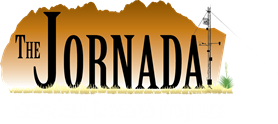| Title | Elevated dust emissions on the Colorado Plateau: Role of grazing vehicle disturbance, and increasing aridity |
| Publication Type | Conference Proceedings |
| Year of Publication | 2018 |
| Authors | Nauman T, Duni D, Webb N, Belnap J |
| Conference Name | Society for Range Management Meeting |
| Volume | January 28-February 2, 2018 |
| Date Published | 01/28/2018 |
| Publisher | Society for Range Management Meeting Proceedings |
| Conference Location | Sparks, Nevada |
| ARIS Log Number | 350371 |
| Abstract | Dust from drylands are of major concern to human society. Dust deposition onto snowpacks can hasten melt rates, resulting in lowered inputs into major rivers. Blowing dust can result in traffic accidents, respiratory disease, and high economic costs. To abate dust emissions, it is necessary to examine suspected sources such as unpaved roads and grazing lands. We measured aeolian sediment mass fluxes in low elevation rangelands and unsurfaced roads on the Colorado Plateau in Utah, USA. Empirical spatial modeling suggests that rangelands are producing ~92-93% of regional dust and roads ~7-8%. Measured ‘hot spots’ in sediment mass flux at 100 cm height rival the highest ever recorded including 7,460 gm-2day-1 (spring 2009) in an off-highway vehicle (OHV) area near Hanksville, UT, but were more commonly 50-2,000 gm-2day-1 in areas with heavy grazing or OHV use. The overall mean measured rangeland sediment mass flux at 100 cm height was 5.14 gm-2day-1, considerably lower than grazed areas (~8-20 gm-2day-1) and OHV areas (414 gm-2day-1). In contrast, a similar area monitored with minimal soil disturbance averaged 1.60 gm-2day-1 from 2007-2015. Annual sediment mass fluxes on all rangeland land use types (light/not grazed, moderately and heavily grazed, and OHV) generally increased with increasing annual temperature, increased winds, and decreasing precipitation. Mass fluxes measured just downwind of unpaved road sites averaged 13.14 gm-2day-1 with a maximum observed seasonal flux of 128.0 gm-2day-1 along a producing oil well access road. Four of the five highest road flux values (n=33 total) measured were adjacent to roads primarily used to access oil or gas well-pads, while one was a road servicing both recreation and well-pads. These findings suggest that predicted future regional mega-droughts may increase dust emissions already elevated due to land management, potentially further compromising air quality, hydrologic cycles, and other ecological services linked to dust. |


